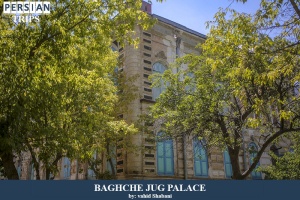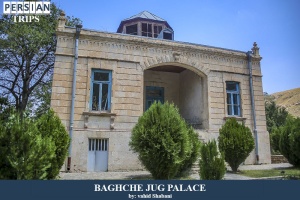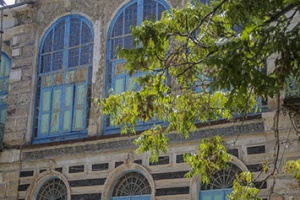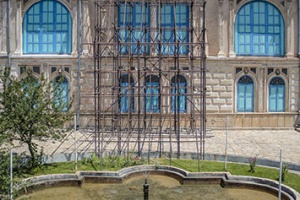Maku Baghcheh Jugh Museum and Palace
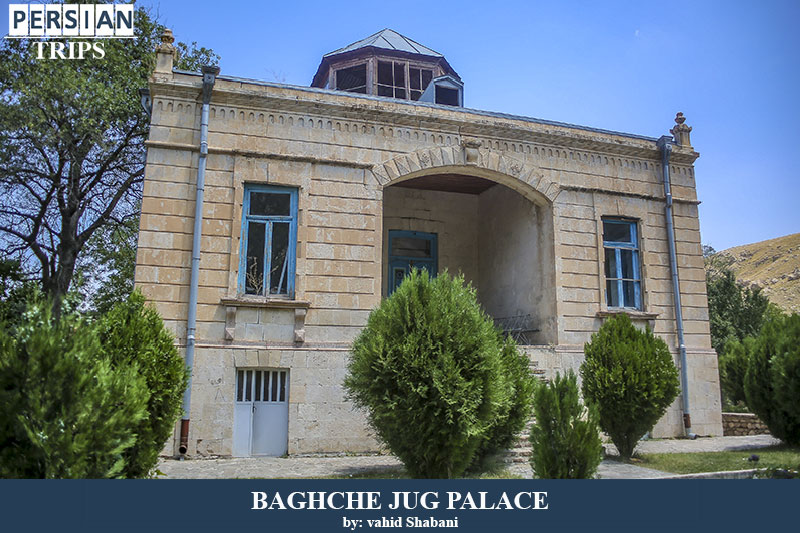
Maku Baghcheh Jugh Museum and Palace, located six kilometers from Maku city in a village with the same name, was the property of Iqbal al-Saltanah Makui, one of the commanders of the Qajar period.
The construction of Baghcheh Jugh Palace began in 1934 and was completed after 11 years during the time of Muzaffar al-Din Shah Qajar. The mansion was built in the form of a pavilion in a historical garden by flattening the natural features of the mountain slope. Baghcheh Jugh Palace, which is also known as Sardar Maku Palace, was purchased due to its outstanding artistic features by the government from Sardar's heirs in 1974, and it was opened as a museum for the public to visit in 1985 after the needed repairs. The palace of Baghcheh Jugh Museum was designated as one of the most valuable and magnificent historical monuments left in West Azerbaijan province in 1996 on the list of national monuments of Iran. This complex is very popular among domestic and foreign tourists due to its strong cultural and artistic attractions. To visit this valuable historical monument, you can participate in Persian Trips Tourism tours.
Architecture of Maku Baghche Jugh Museum and Palace
Maku Baghche Jugh Museum and Palace has numerous buildings and spaces according to the needs and traditions of that time. Large garden, courtyard entrance, main palace building, palace bathhouse, stone building or palace kitchen, etc. are among the different parts of this complex. The exterior of the building is covered with beautiful plaster sculptures that adorn the plaster entrances and railings of the roof edge. The main building of Maku Baghche Jugh Museum and Palace has been constructed on both the ground floor and the first floor with an area of 2500 meters in the middle of an 11-hectare garden. One of the prominent features of the palace building is its symmetry, which can be clearly seen in the façade of the building including decorations and paintings without needing any expertise in architecture. In terms of cultural and architectural integration, this symmetry is half Iranian and half Western, with the walls of both parts painted with natural colors. The Iranian part is decorated with flowers, plants, Qajar men and women while the western part is decorated with 19th-century Russian house wallpapers and European motifs. Considering the combination of Iranian and Western architectural styles in this building as well as written sources, it is clear that Iranian painters collaborated with Russian, European and Chinese architects. One of the most interesting architectural nuances is the proximity of the dining room to Hoz Khaneh (pool room); in addition to mirror works and plastering, the European-style landscapes of that time portrayed inside the glass frames constitute an important decoration of the room. All the surfaces along with the ceiling of the dining room are skillfully decorated with gold star patterns and green and white colors.
Locals believe that Sardar Maku was the first person to import iron into Iran, so it was used in Baghche Jugh Palace. Since the palace was the summer palace of Sardar Maku, windcatchers are used inside to create cool air on all four sides.
Different Structures
A stone building was built on the southwest side of the palace in the garden, which serves now as the Cultural Heritage and Tourism Office in Maku. In contrast to its simple interior, the exterior of this structure is made entirely of cut marble with remarkable precision in architectural proportions.The entrance to the courtyard of Maku Baghche Jugh Museum has a relatively small vestibule with a painted roof and functions as a connecting path to the courtyard and the building. Inside the yard, fruit trees, three small and large ponds and platforms for taking a rest have been built. As it was said, the form of the yard has ups and downs, following the natural form of the mountain slope.
Decoration of Maku Baghche Jugh Museum Palace
The decorations and murals of Maku Baghche Jugh Museum Palace are so beautiful and impressive that have made this palace a valuable example of Qajar palaces in Iran. Plastering in this building has the most important role in decorating it. The plastering used in the stairs, columns, doors, walls of the rooms are very artistically and creatively aligned with the function of each space. In addition, the paintings of this historical monument incorporate one of the most amazing and unique paintings of the Qajar period. Artists from Khoy, China and Russia have expressed Islamic, Iranian and European culture and civilization in the language of painting. One of the most important factors in the beauty and splendor of Baghche Jugh Palace is the presence of very beautiful and expensive furniture in it. The palace has a collection of expensive velvet wallpapers with floral and plant designs, woven curtains, unique sofas, multiple beds with swing mattresses, high-quality porcelain tableware and stunning crystal chandeliers.
Tags: West Azerbaijan Province, West Azerbaijan Attractions, Maku Baghcheh Jugh museum and palace, Palaces in Iran, Museums in Iran, Iran Historical Attractions











